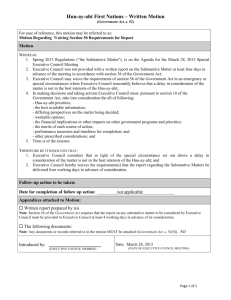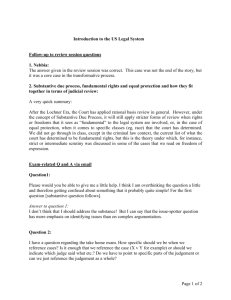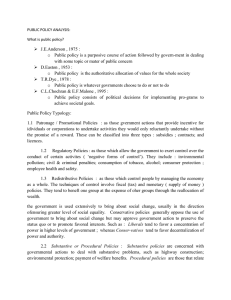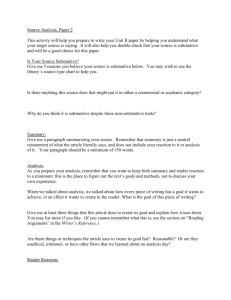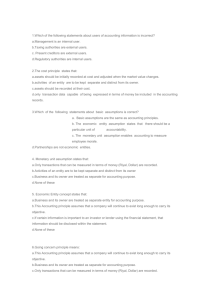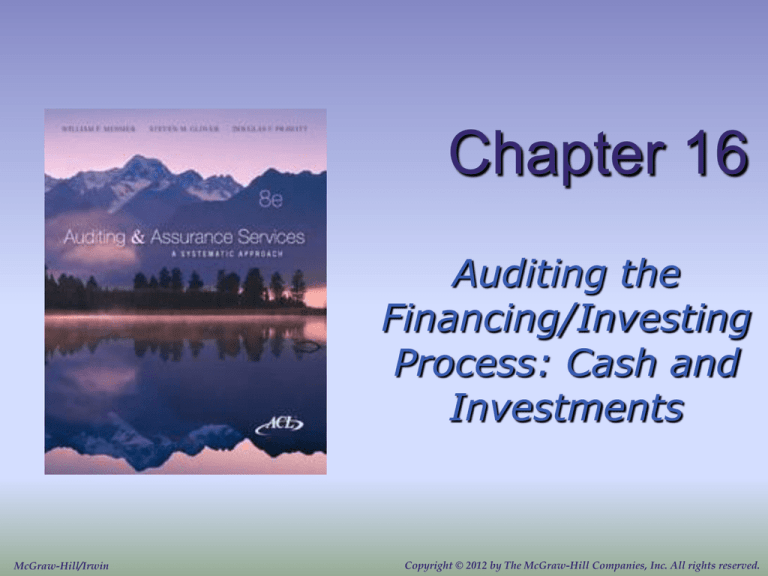
Chapter 16
Auditing the
Financing/Investing
Process: Cash and
Investments
McGraw-Hill/Irwin
Copyright © 2012 by The McGraw-Hill Companies, Inc. All rights reserved.
LO# 1
Cash and the Effect of Major Accounting
Transactions/Business Processes
16-2
LO# 2
Types of Bank Accounts
Types of Bank
Accounts
General Cash
Account
Imprest Cash
Accounts
Branch
Accounts
In order to optimize its cash flow, an entity implements
procedures for accelerating the collection of cash
receipts and delaying the payment of cash
disbursements, to the extent delay is appropriate.
16-3
Substantive Analytical
Procedures—Cash
LO# 3&4
Because of the residual nature of
the cash account, the auditor’s
use of substantive analytical
procedures for auditing cash is
limited to . . .
comparisons with
prior years’ cash
balances.
comparisons with
budgeted amounts.
This limited applicability of substantive analytical procedures is normally offset
by (1) extensive tests of controls and/or substantive tests of transactions for cash
receipts and disbursements or (2) extensive tests of the entity’s bank
reconciliations.
16-4
LO# 3&4
Substantive Tests of Details
of Transactions and Balances
16-5
LO# 3&4
Balance-Related Assertions
16-6
Auditing the General Cash
Account
Copy of Bank
Reconciliation
LO# 5
To audit a cash
account, the auditor
should obtain these
items.
Standard Bank
Confirmation
Cutoff Bank
Statement
16-7
LO# 6
Fraud-Related Audit Procedures
Extended Bank
Reconciliation
Procedures
Proof of Cash
Tests for Kiting
16-8
LO# 6
Disclosure Issues for Cash
16-9
LO# 7
Auditing Investments
Common Stock
Preferred Stock
Debt Securities
Hybrid Securities
16-10
LO# 8
Control Risk Assessment—
Investments
Occurrence
and
Authorization
Here are some of the more
important assertions for
investments.
Completeness
Accuracy and
Classification
16-11
LO# 9
Segregation of Duties
16-12
LO# 10
Substantive Procedures for Testing
Investments
16-13
LO# 11
Advanced Module: Auditing Fair
Value Measurements
ASC Topic 820 Levels
Level 1: Valuations based on quoted prices in
active markets for identical assets. Also known
as “marking to market.”
Level 2: Valuations based on directly or
indirectly observable market data for similar
assets. Also known as “marking to matrix.”
Level 3: Valuations based on management’s
best judgment and involve management’s
assumptions. Also known as “marking to
model.”
16-14
LO# 11
Advanced Module: Auditing Fair
Value Measurements
Obtain an understanding of how management
makes the fair value measurements.
Consider whether specialized skills or
knowledge are required.
Test the entity’s fair value measurements.
Evaluate the reasonableness of the fair value
measurements.
16-15
End of Chapter 16
16-16

